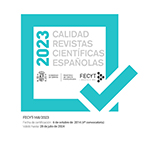On Time: Initial Approaches between Physics and the Sociological Thought of Norbert Elias
Abstract
The fundamental concept of time used by Physics was built by Galileo, through the observation of the apparent pendulum isochronism and establishing the possibility of using an instrument as a generator of temporal intervals to investigate natural phenomena occurring around them. At that time, a religious conception of time was dominant: according to this, the celestial objects, infallible and without the imperfections of the common world, dictated the temporal evolution of every phenomena. Thanks to Galileo, we are able to measure time and, consequently, we started to measure the world. With Newton, we return to a divine conception of time: evolution is an absolute space and time which can be understood as a divine sensation. The absolute time permeates everything that happens in our universe; it does not matter where the clock is because it is always capable of measuring uniformly time intervals. The three-dimensional space is Euclidean, meanwhile time is completely independent. For Elias, beyond the three physical and classical dimensions, it is needed to add are two other dimensions which are built in the context of human interdependency, namely, time and symbol. Time is an relevant dimension of Elias thought, time as an experience of duration, reference, and as a measurable change; time, simultaneously, as a physical and social entity. Clocks play a key role in the way we investigate the world and as instruments of time measurement produce a new time dimensions. But they are not built just for this purpose; their accuracy is closely related to the great voyages. Accuracy in time measurement provides a more exact position of a ship's longitude on the globe. With Einstein, this absolute synchronicity of two clocks loses its meaning: from this moment, clocks measure different time intervals according to their location and spatial movement. The time is "spatialized" and space-time is now a locating system of any event in our universe. The purpose of this article is to explore the possibilities of a dialogue on concepts of time, between a natural science, Physics, and the multiple faces offered by figurational approach.
Downloads
Article download
License
In order to support the global exchange of knowledge, the journal Política y Sociedad is allowing unrestricted access to its content as from its publication in this electronic edition, and as such it is an open-access journal. The originals published in this journal are the property of the Complutense University of Madrid and any reproduction thereof in full or in part must cite the source. All content is distributed under a Creative Commons Attribution 4.0 use and distribution licence (CC BY 4.0). This circumstance must be expressly stated in these terms where necessary. You can view the summary and the complete legal text of the licence.











